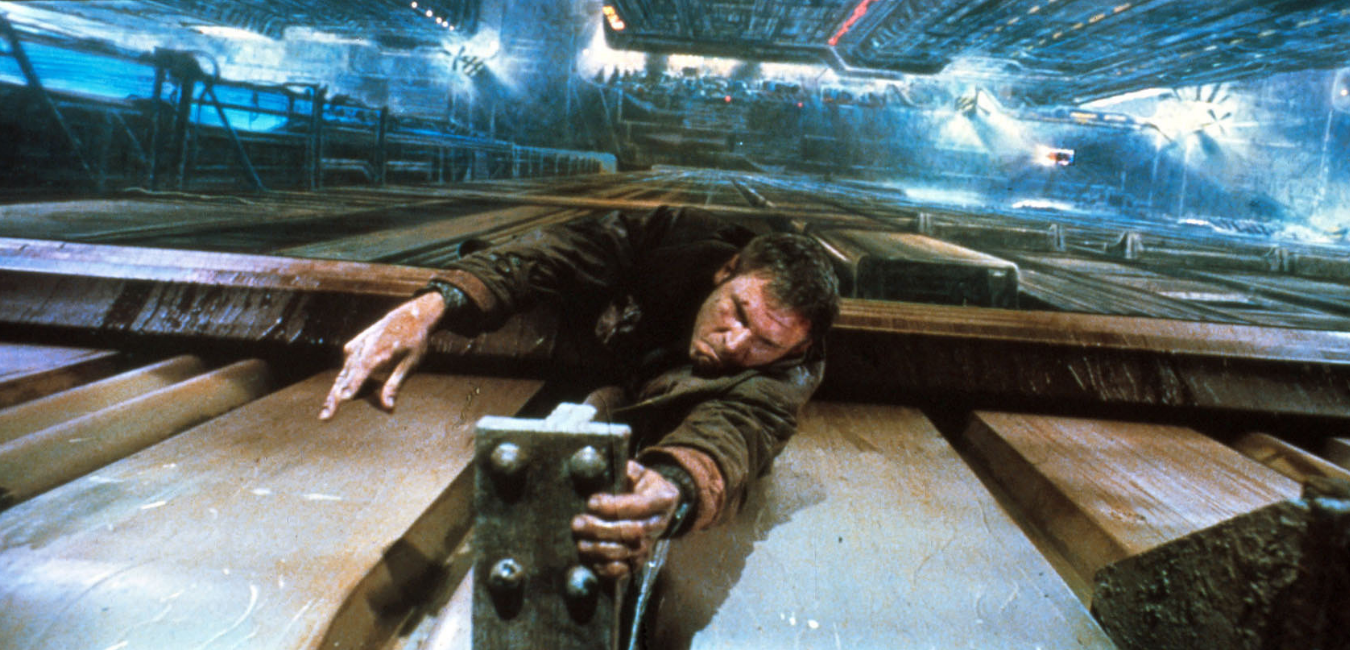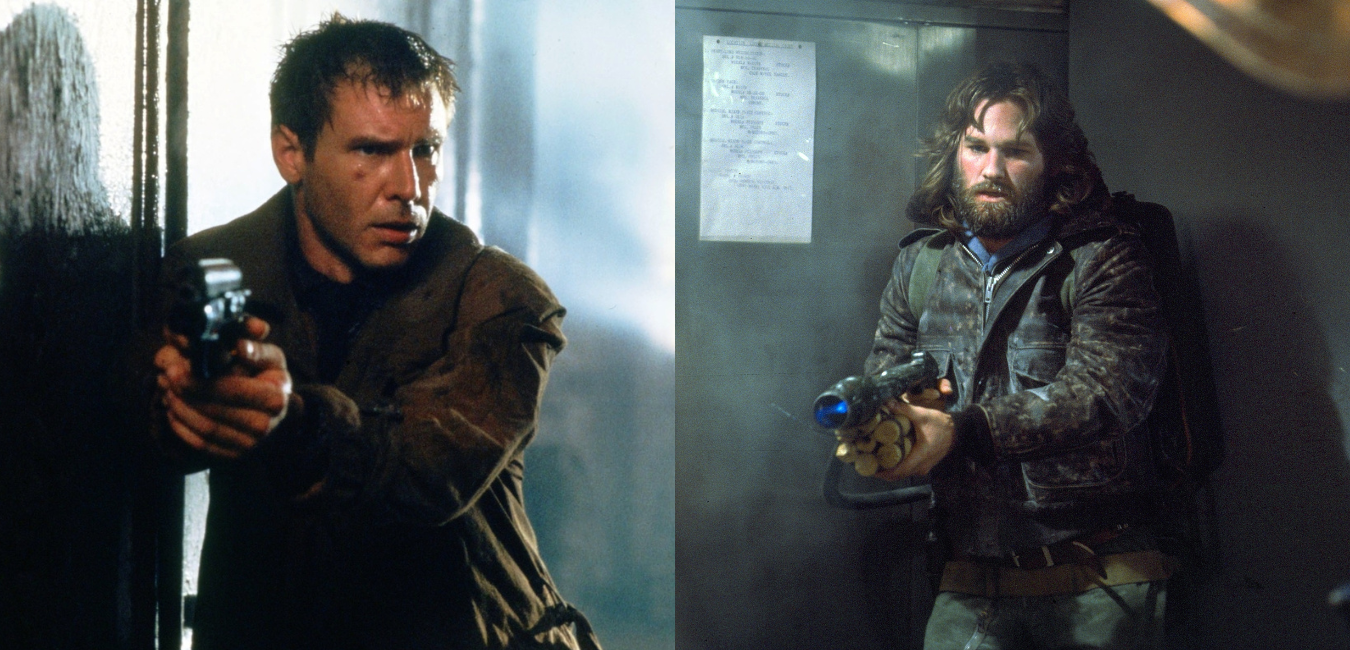The atmospherics of 'Blade Runner' grow on you

Harrison Ford faces existential questions in 1982’s “Blade Runner.” (Warner Bros./MovieStillsDB.com)
Every viewing unlocks more of the picture
"Blade Runner"
Released June 25, 1982
Directed by Ridley Scott
Where to Watch (Original) (Final Cut)
From conception and box office bomb to multiple versions and critical reappraisals, the behind-the-scenes journey of "Blade Runner" might be more interesting than the film itself. But that might depend on how many times you've seen it because Ridley Scott's sci-fi noir gets better for me every time I watch it.
Based on the Philip K. Dick novel, "Do Androids Dream of Electric Sheep?," "Blade Runner" concerns a dystopian Los Angeles society 37 years in the future (the 1982 movie gives 2019 as the year) where bioengineered humans called replicants are outlawed on Earth and are hunted down by people called blade runners. One of the blade runners, Rick Deckard (Harrison Ford), is tasked with finding and killing four escaped replicants led by unpredictable Roy Batty (Rutger Hauer). As Deckard tries to understand the mind and motivation of these replicants, he also forms a relationship with Rachael (Sean Young), an assistant for the Tyrell Corporation, the company that developed replicants. Rachael does not realize until midway through the movie that she, too, is a replicant, a troubling discovery for her as she was programmed with a lifetime of memories dating back to childhood. So if a replicant can be in the dark, what does that mean for our own human self-awareness?
"Blade Runner" was Scott's follow-up movie after 1979's "Alien," another film that proved incredibly influential. In a 1982 interview with Film Comment, Scott said he signed on to direct "Blade Runner" late in the development process.
"My initial reaction on reading the script was that it seemed on the surface another futuristic script, and I figured I'd just done that and I ought to change gears," Scott said. "But when I thought about it more, I thought it's not really futuristic. It's set 40-years on, but it could take place in any time slot. And so I started to backdate it in my head – as far as the look and feel are concerned – and what we're really doing is a 40-year-old film set 40 years in the future. It's the Philip Marlowe world: film noir, ceiling fans."
When the film was finally completed and released, "Blade Runner" famously didn't perform well at the box office. It opened in second place with $6.1 million. Still, in a highly competitive summer season that included "E.T. the Extra-Terrestrial," "Star Trek II: The Wrath of Khan," and "Rocky III," ticket sales quickly dropped, and the film soon disappeared from theaters. It finished its original domestic run grossing $27.6 million.
One of the perceived issues was the star and tone: Ford's downbeat Deckard is a departure for audiences used to scrappy, charming heroes like Han Solo and Indiana Jones. However, the ultimate concern was the creative friction behind the scenes. The initial previews of "Blade Runner" did not perform well with audiences, so the film continued to be revised up until its premiere. To explain more of the story in the atmospheric movie, Scott agreed to include narration by Ford and one final scene that gives an open-ended conclusion for Rachael.
Even though he agreed to it, Scott was unsatisfied with the theatrical cut. He authorized a director's cut in 1992 that removed the narration and "happy ending." More than a decade later, Scott made one more edit on the influential film, "Blade Runner: The Final Cut," released in 2007. Viewers watching “Blade Runner” now get a more ambiguous ending.
"The director's cut removed the voice-over and that silly ending and put in the unicorn daydream, but the disc didn't look that great," Scott told Wired in 2007. "And it should look great because 'Blade Runner' at the time was pretty formidable — it's pretty formidable even now, actually. A lot of people don't notice whether they're watching something beautifully technical or not, but it's important to me. So that always got in the way of the director's cut being the final version. I think it's final now because I've done all the nips and tucks and tidied up one or two of the visual areas that we couldn't do properly at the time because we didn't have the technology."
"Blade Runner" was a blind spot for me for a long time. I didn't catch it during its initial release. By the time word of its underappreciated genius reached me years later, I had found it baffling to determine which cut of the movie I should watch (even in the early days of the Internet, there were many strong opinions). I finally saw it for the first time when the Final Cut was released, and I was underwhelmed. Decades of praise about "Blade Runner" are hard to live up to.
I've returned to "Blade Runner" a few times since then, and every viewing has unlocked more of the picture for me. Most recently, I was utterly drawn into the atmosphere of the film. The production design by Lawrence G. Paull, art direction by David Snyder, and cinematography by Jordan Cronenweth, under Scott's direction and vision, create a moody but tangible neo-noir world, but what makes "Blade Runner" truly transformative is the music and sound of the film. Vangelis, fresh off his Academy Award victory for the iconic theme to "Chariots of Fire," scored the picture with synthesizers to give the music a melodic science fiction feeling. Vangelis is not the only composer during this time to use synthesizers, but as the years have gone on, the music is uniquely identifiable with the themes of "Blade Runner." It also makes it distinct from many beloved films from the decade that leaned on orchestral music.
"All the time I was drawing, I was listening to Vangelis," said production illustrator Tom Southwell. "To hear that music come in and be drawn into this thing was magical for me. You're into it five minutes, and I'm no longer involved in looking at my artwork. I'm feeling the story, I'm feeling the emotions of the characters, and I'm lost in the middle of this wild world. It's so rich, and it's painful. It's a very bluesy, dark story that's told very compassionately."
The Blade Runner aesthetic helped influence the next generation of science fiction films, particularly ones that had to design similar dystopian futures. In addition, its status as a cult movie has continued to grow over the decades. It now earns a higher than 90 percent approval rating from audiences and critics on Rotten Tomatoes. In the sequel, Ford returned as Deckard 35 years later in "Blade Runner 2049," a 2017 movie starring Ryan Gosling and directed by Denis Villeneuve. The latter brought his own visual panache to the project. Like its predecessor, "Blade Runner 2049" underperformed at the box office but is growing its devoted fanbase every day. The more things change, the more they stay the same.
"The view of the future offered by Ridley Scott's muddled yet mesmerizing "Blade Runner" is as intricately detailed as anything a science-fiction film has yet envisioned," wrote Janet Maslin for The New York Times. "Science-fiction devotees may find "Blade Runner" a wonderfully meticulous movie and marvel at the comprehensiveness of its vision. Even those without a taste for gadgetry cannot fail to appreciate the degree of effort that has gone into constructing a film so ambitious and idiosyncratic."
Next Week: "A League of Their Own"
Mark is a longtime communications media and marketing professional, and pop culture obsessive.




